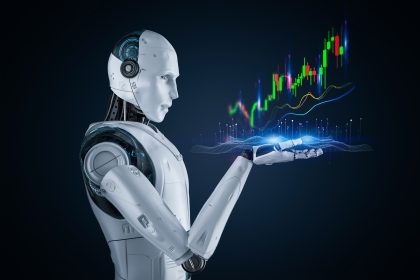Artificial intelligence, which was tasked with creating a robot that could walk, showed how AI and humans differ in their thinking. The robot turned out to be small, elastic, and deformed, but able to do what the scientists asked.
This is stated by scientists from Northwestern University, the Massachusetts Institute of Technology, and the University of Vermont in the United States in the results of a study, which were published in the Proceedings of the National. Scientists also published a video with the robot (to watch it, scroll to the end).
During the research, the AI was given a clear task, which is to design a robot that can walk. The AI spent only 26 seconds to complete the task, creating a whole evolutionary line of robots. The first model it developed looked like a rectangular block the size of a soap bar. This model was able to move, but not walk yet, so the AI essentially remodeled it until it ended up being a somewhat cartoonish robot with legs that was still able to walk.
“We told AI that we wanted a robot that could walk on the ground. Then we just pushed a button,” said Sam Kriegman, an associate professor at Northwestern University and lead author of the study.
The current model was elastic, shaped like an irregular rectangle or a drop, and had a purple color. It turned out that it needed air to walk.
Kriegman believes that the walking robot “does not look like any animal that has ever walked on earth,” although it is worth noting a certain resemblance to a rhinoceros.
Describing how AI remodeled the robot in 26 seconds until it made a “working” one, the researchers said it was “instant evolution.”
“Robot evolution used to require weeks of trials and errors on a supercomputer. It also took billions and billions of years before animals could run, swim, or fly around our world,,” Kriegman said.
Such a long evolution is explained by the fact that nature learns from its mistakes, but it has to make these mistakes because it is not able to look into the future to know whether a particular evolutionary model will work or not. AI is able to calculate everything in advance instead.
“We have found a way to remove this veil,” the scientist said.
According to Gizmodo, the scientists printed the model proposed by AI on a 3D printer to check whether it would work in the real world. The video published by the scientists shows how the researchers pump air into the robot, which expands and begins to move its legs. Yes, the robot is slow, but the fact that it was created in just 26 seconds of evolution is important to scientists.
What surprised the scientists the most was the robot’s “design” approach, which they could not understand at first. In particular, it was the holes on the body, which at first seemed random to scientists, but when they removed them, it turned out that the robot lost the ability to move.
The researchers also say that the strange shape and texture of the AI-designed robot was unlike anything previously created by human engineers. They believe that the AI-designed robot may force future designers to question their assumptions about what shapes are actually the most efficient for a desired task.
“When people design robots, we want them to look like familiar objects, but artificial intelligence can create new possibilities and new ways forward that people didn’t even realize… I think that some people see a useless gadget when they look at this robot, while I see the birth of an entirely new organism,” Kriegman said.



